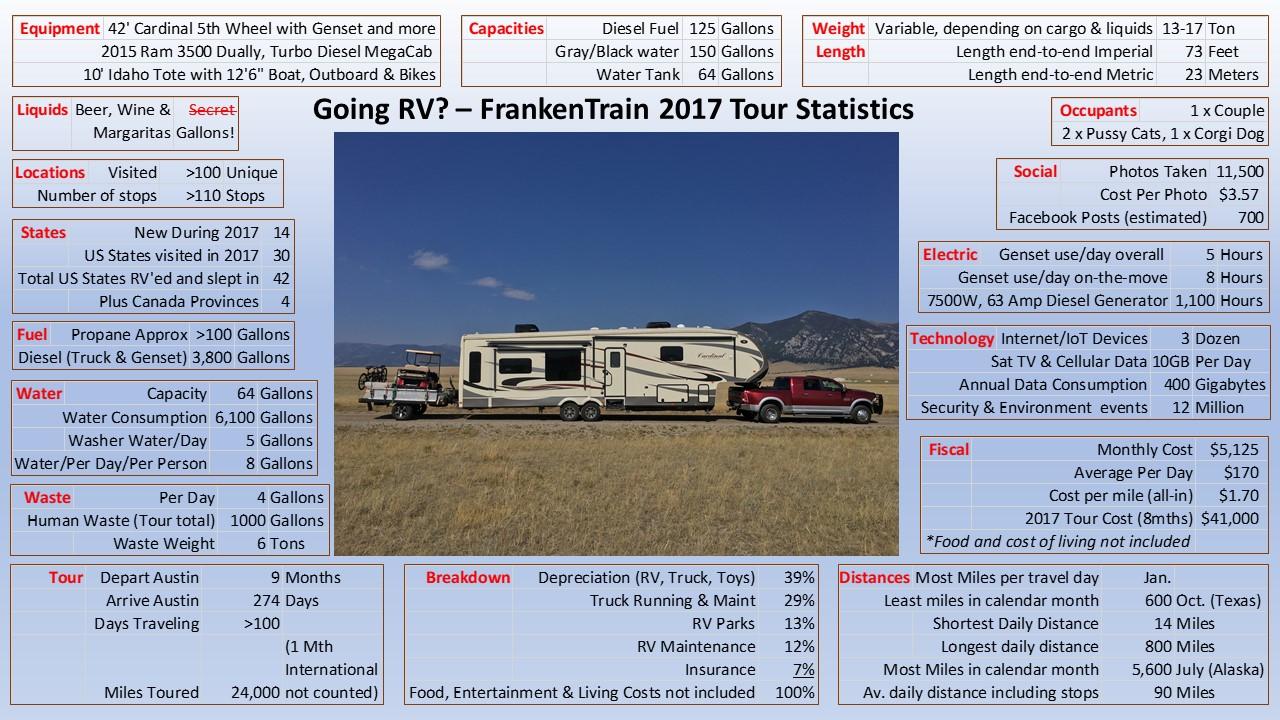Search the Community
Showing results for tags 'ambulance package second alternator'.
-
I’m wanting to install a second alternator in my 6.7 liter, 3500 dually megacab and looking for tips on alternator type, whether to install it standalone, and the cable path for two high ampacity 1/0 cables. I tow a big 42’ 5th wheel with an extra, dual hitch 10’ trailer behind the RV, with self turning trailer wheels (Idaho tote). On the tote is an electric golf cart, 12’6” zodiac type inflatable boat with outboard, and bicycles. We are experienced RVers with 70,000 miles and 42 states under our belts. I plan to use the six additional matched golf cart batteries tied to the four identical batteries in front to make a total of ten house batteries which are 5 parallel banks of 6+6v=12v. Over 2,000 ampere hours of total capacity. The purpose of the second alternator is for several reasons in the order of importance below: 1. To charge the ten batteries after overnight boondocking, maybe without generator use, and charge them from the second alternator as we drive down the road to the next destination. 2. To supplement power during peak use time of the generator while boondocking. More about this further below. The Cummins Onan generator is a specially installed 7,500W commercial quiet diesel, with a 32 gallon tank, and is topped up from the 56 gallon tank at the front of the bed which has a GPI pump and long hose. 3. To provide enough power to charge batteries while the inverter runs a single A/C or heat pump while driving down the road. No more hot tin can RV and waiting for it to cool down! We successfully ran the generator and A/C’s one-two hours before destination, during travel last year and it made a huge difference as we setup. The initial high current start of the A/C will be handled by the generator, and the 11-14 Amps @120v will be maintained by the 2,000 watt inverter by a transfer switch that changes over to power in about 80mS (about 1/12 of a second). This is definitely a science experiment and won’t be without snags, but we will see how well it works. I’ll most likely have to turn the thermostat down very low and see whether the cycling of the A/C will pop the inverter breaker. USE I am installing the third A/C presently which will give a total of 42,500 BTU’s of cooling with all three running (total load of 39 Amps at 120v). I calculate it will allow up to 40f of temperature difference in the summer and we can be comfortable in a 100f+ desert environment and continue working inside. I’m installing a second 2,000 Watt inverter in the RV which is the same type powering a large residential electric fridge freezer. The second inverter has two transfer switches to switch load between the inverter and a Cummins 7,500W diesel generator when it runs. The generator in turn is also connected to a bigger transfer switch to change between shore supply and generator. It looks like the idle speed of the truck can be controlled by programming, and I am specifically interested in: 1. A 220 Amp (stand alone?) alternator and regulator package and 2. The recommended cable path for two 1/0 wires to carry the high current to the rear bed attached to two connectors near the 7 pin trailer plug. The rest of the wiring is complete between the RV battery box and the front overhang of the 5th wheel to drop into the bed through an access panel where the trailer plug also now routes. Through that point, I have two separate 1/0 cables for positive, which will be in parallel using separate but identical truck connectors with the thick single pin that is a similar form factor to a 7 pin trailer plug. For the return path to earth, there are two more 1/0 cables using Anderson Power two pin 4/0 sb35 connectors (found in forklift batteries) which will connect between the truck chassis and the RV hitch for good grounding. The voltage loss I calculated seems acceptable to still charge the ten batteries up, and allow them to run the inverters. In high load circumstances (like 100f heat in summer), the extra 2,000 watts from the alternator can charge batteries on the two inverters and I can route the inverter use through the batteries by leaving the circuit breakers from the generator open to use the batteries charged by the truck. This will allow me about 10KW of electric power, 7.5 from the genset, and 2.5 from the truck. Has anyone done this before? I’m ready to commence buying an alternator and want to confirm I may be better keeping the alternator/regulator package separate vs the RAM dual setup. Any thoughts or insights appreciated. If you made it this far you have great insight to our very complex setup, but it’s our home for a while!

